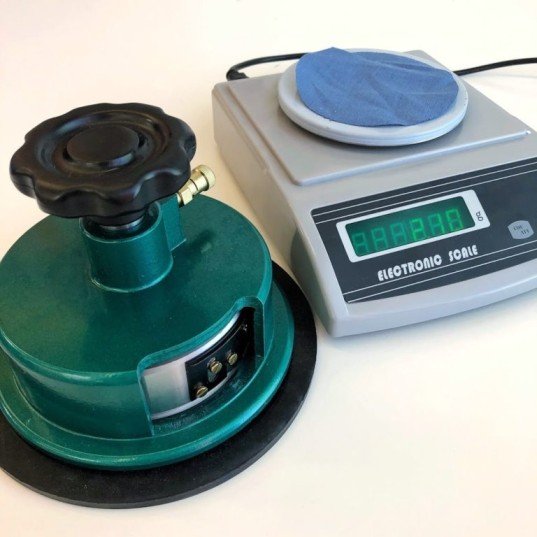Finding the right PP (polypropylene) non-woven bags can better showcase the company’s image and promote the business. One of the critical factors to consider when selecting these bags is the fabric weight. This comprehensive guide aims to address common pain points of fabric weight faced by buyers and provide some advice from a supplier’s point of view.

1. Understanding Fabric Weight
Fabric weight refers to the density of the material used in the bags, typically measured in grams per square meter (GSM). This measurement impacts the bag’s performance, including durability, strength, and cost. For bulk buyers, understanding how fabric weight influences these factors is crucial for optimizing your purchasing strategies.
2. Common Pain Points of Fabric Weight
- Durability and Strength. One of the primary concerns for bulk buyers is whether the selected fabric weight will provide adequate durability and strength. Bags used for carrying heavy items or subjected to frequent use need to withstand wear and tear. The wrong choice can lead to customer complaints and potential financial losses.
- Cost Control. Higher fabric weights equal increased costs. It would help if you balance the need for high-quality, durable bags with budget constraints. A common challenge is finding the optimal fabric weight that meets performance requirements and cost efficiency.
- Supplier Transparency and Consistency. Fabric weight standards’ variability across different suppliers can result in discrepancies in product quality. Some suppliers might overstate fabric weights, leading to underperformance in the final product. Ensuring supplier transparency and consistency is essential for maintaining product reliability and customer trust.
- Application Suitability. Different applications require different fabric weights. For instance, shopping, gift, and industrial-use bags have different requirements. You need to select fabric weights tailored to specific applications to ensure functionality and customer satisfaction.
- Environmental and Sustainability Concerns. With the growing emphasis on sustainability, you are increasingly concerned about the environmental impact of purchases. Heavier fabric weights come with higher resource consumption, which can be a drawback for eco-conscious businesses. Balancing durability with environmental responsibility is also your job to do.
- Tactile and Aesthetic Qualities. The fabric weight also affects the tactile feel and visual appeal of the bags. So the bags’ performance and aesthetic qualities also need to be considered.
- Batch Variability. Different fabric weights across different production batches may cause different product quality. It would help if you worked closely with suppliers to ensure that each batch meets the specified standards to maintain consistency.
3. Addressing the Pain Points of Fabric Weight
3.1 Ensuring Durability and Strength

Fabric Weight Selection
- Lightweight Bags (60-80 GSM): Suitable for lightweight items and single-use applications. These bags are cost-effective but may not provide the durability required for heavy-duty use.
- Medium Weight Bags (80-120 GSM): Ideal for general-purpose use, offering a balance between cost and durability. Commonly used for shopping and promotional bags.
- Heavyweight Bags (120-150 GSM and above): Designed for heavy-duty applications, these bags offer superior strength and durability, making them suitable for carrying heavier items and repeated use.
Testing and Quality Assurance
- Conducting rigorous testing on sample bags to assess their strength and durability under various conditions can help you make decisions.
- Collaborating with suppliers who supply consistent qualified products.
3.2 Managing Costs
Cost-Benefit Analysis
- Performing a cost-benefit analysis to compare the long-term savings of higher-quality bags against their initial costs can provide a clearer picture of the most economical choice.
- Factors such as reduced replacement rates and enhanced customer satisfaction can justify the investment in higher fabric weights.
Negotiating with Suppliers
- Establishing long-term relationships with reliable suppliers can lead to better pricing and terms, helping manage costs effectively.
- Exploring bulk purchase discounts and negotiating favorable terms can further reduce expenses.
3.3 Ensuring Supplier Transparency and Consistency
Supplier Evaluation and Audits
- Conducting thorough evaluations and audits of potential suppliers to verify their adherence to stated fabric weight standards.
- Requesting detailed specifications and certifications can help ensure transparency and consistency.
Establishing Clear Contracts
- Clearly outlining fabric weight requirements and quality standards in purchase contracts can protect you from discrepancies.
- Including regular quality check clauses and non-compliance penalties can enforce supplier accountability.
3.4 Matching Fabric Weight to Application

Understanding Application Requirements
- Identifying the specific requirements of different applications helps in selecting the appropriate fabric weight.
- Collaborating with suppliers to customize bags for specific uses can ensure optimal performance.
Prototyping and Feedback
- Creating prototypes and gathering feedback from end-users can provide valuable insights into the suitability of fabric weights for different applications.
- Iterative testing and refinement can lead to the development of bags that perfectly meet application needs.
3.5 Addressing Environmental and Sustainability Concerns
Eco-Friendly Materials and Processes
- Exploring options for recycled or biodegradable materials can help mitigate the environmental impact of heavier fabric weights.
- Working with suppliers who implement sustainable manufacturing practices.
Balancing Durability and Eco-Friendliness
- Opting for medium-weight bags that balance durability and environmental responsibility can be an effective strategy.
- Promoting the reusability of bags can extend their lifecycle, reducing the overall environmental footprint.
3.6 Ensuring Tactile and Aesthetic Quality
Sample Evaluations
- Requesting samples to evaluate the tactile feel and visual appeal of the bags before bulk purchasing.
- Collaborating with suppliers to refine the design and material choices can enhance the final product’s aesthetic and tactile qualities.
Customer Feedback
- Gathering feedback from end-users regarding their preferences can guide future purchasing decisions.
- Prioritizing customer satisfaction can lead to higher repeat business and positive brand perception.
3.7 Managing Batch Variability

Implementing Quality Control Measures
- Establishing strict quality control protocols with suppliers to monitor fabric weight consistency across batches.
- Regularly auditing production processes and conducting spot checks can help maintain uniformity.
Supplier Collaboration
- Maintaining open communication with suppliers to address any variability issues promptly can foster a cooperative relationship.
- Encouraging suppliers to invest in consistent manufacturing practices can enhance overall product quality.
4. Conclusion
For bulk buyers, understanding and effectively managing the fabric weight of PP non-woven bags is crucial to ensuring product quality, cost-efficiency, and customer satisfaction.
Selecting the right fabric weight involves a comprehensive approach, including thorough testing, supplier collaboration, and a keen understanding of application requirements. By balancing these factors, bulk buyers can secure PP non-woven bags that meet their specific needs, enhance customer satisfaction, and contribute to the overall success of their business.
Investing time and resources in understanding fabric weight and implementing best practices can lead to significant long-term benefits, including reduced costs, improved product performance, and a stronger market reputation.
Choosing the right non-woven bags can better showcase your company’s image and promote the business. Our company offers high-quality PP non-woven bags that are durable, cost-effective, and customizable with different fabric weights to meet your specific needs. With a commitment to sustainability and consistent quality, our bags are the perfect choice for enhancing your brand image and ensuring customer satisfaction. Reach out to us today to discover how our PP non-woven bags can benefit your business.


